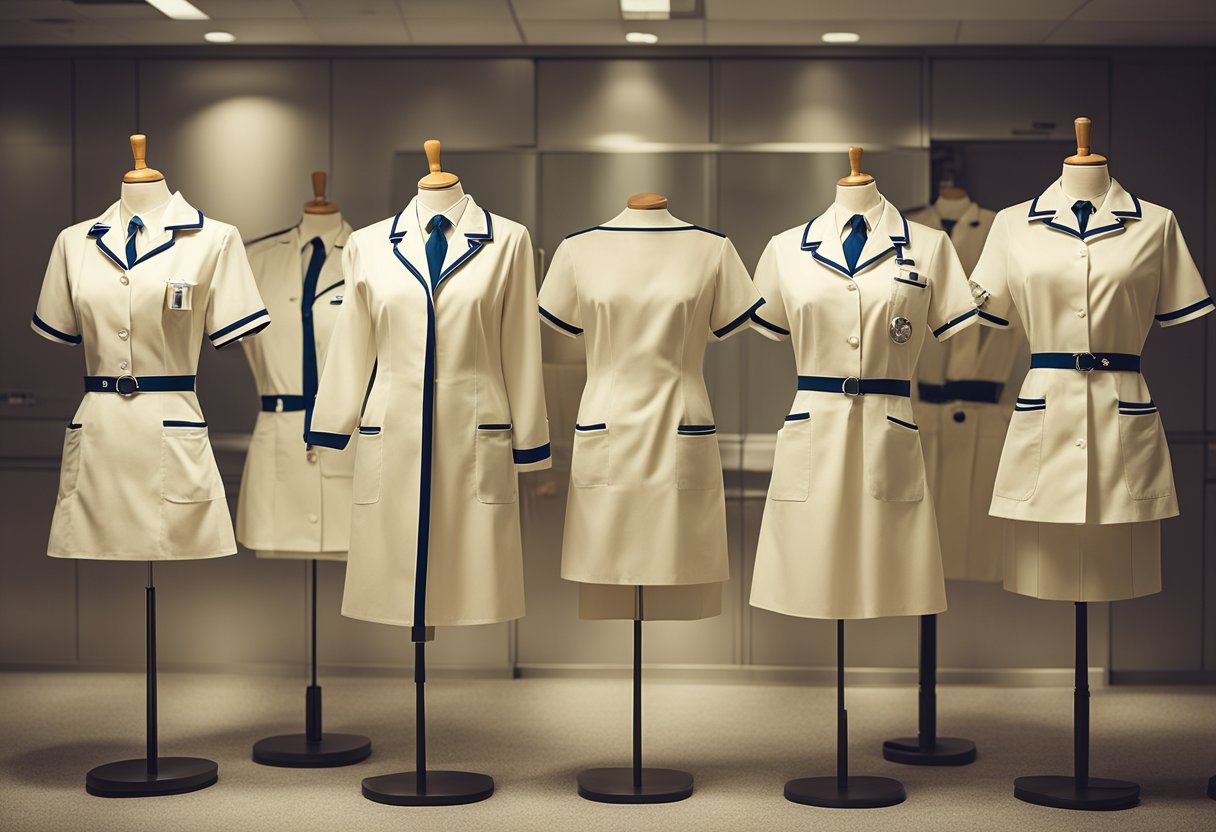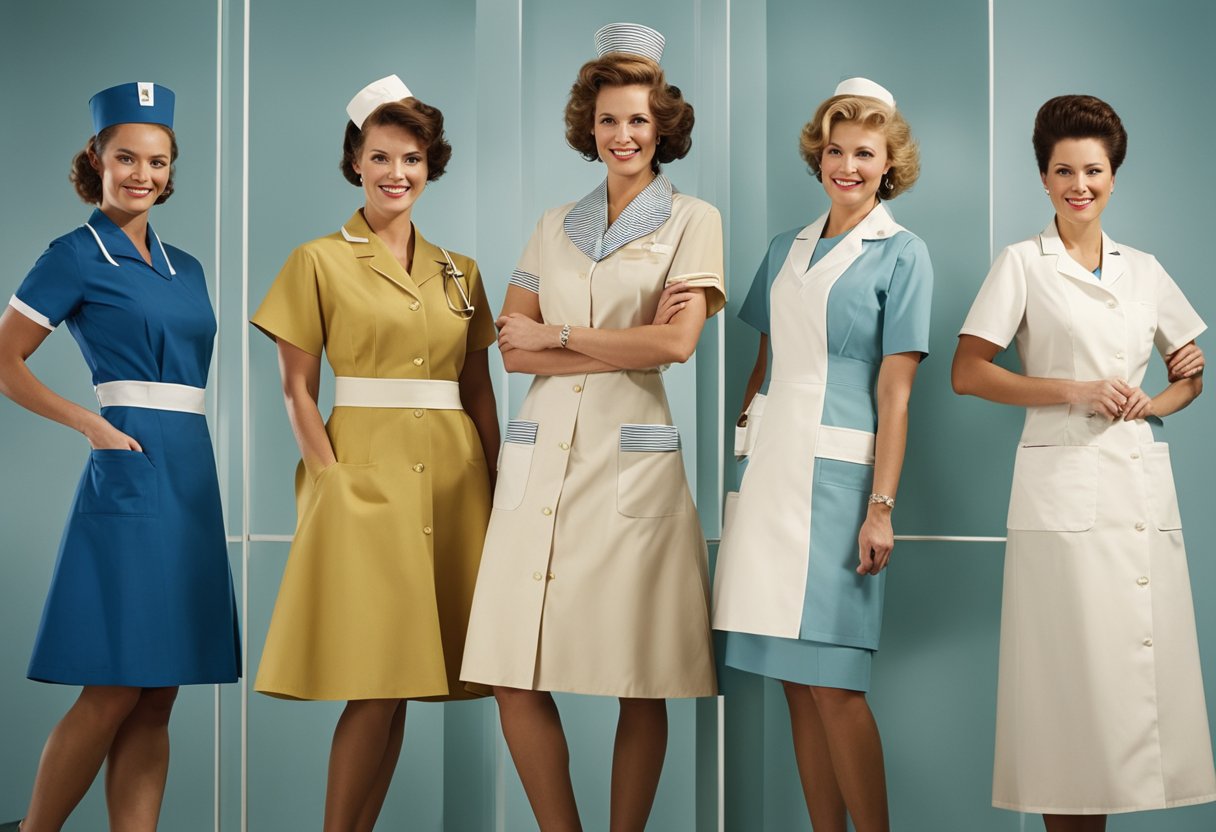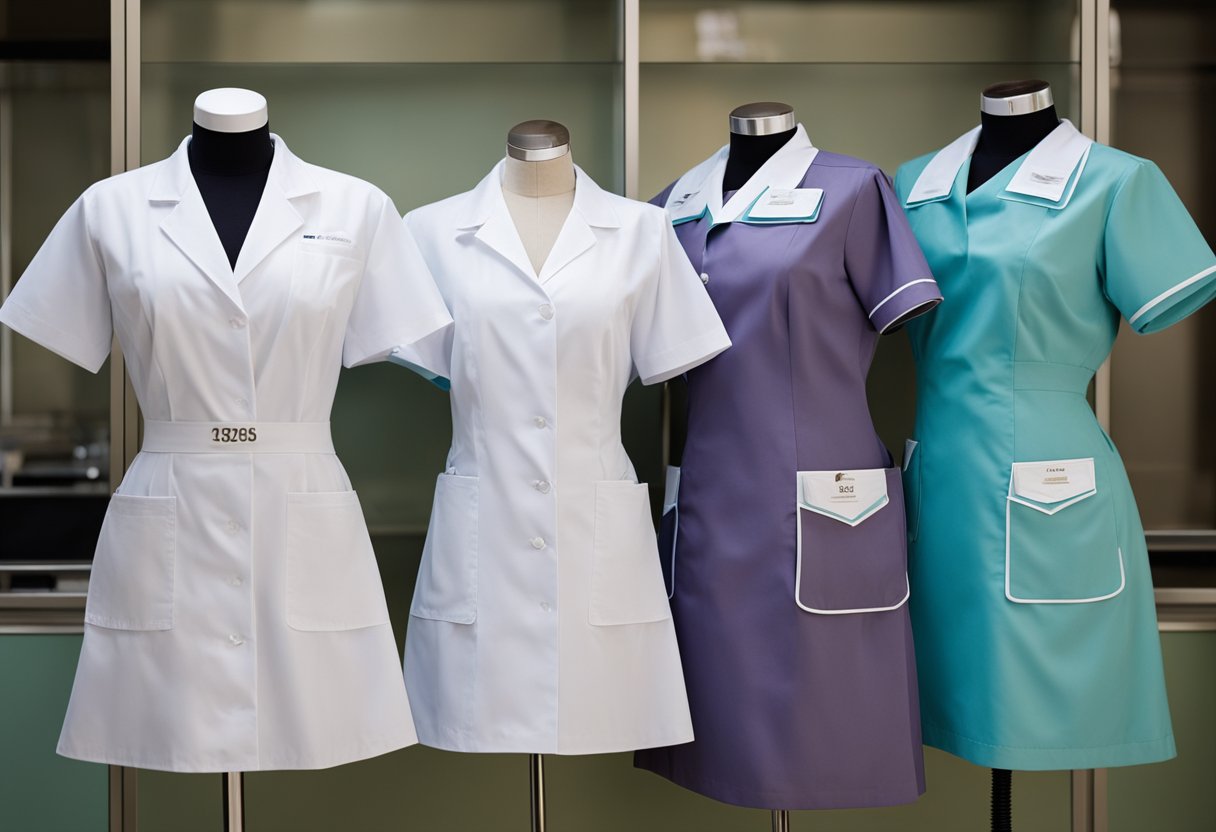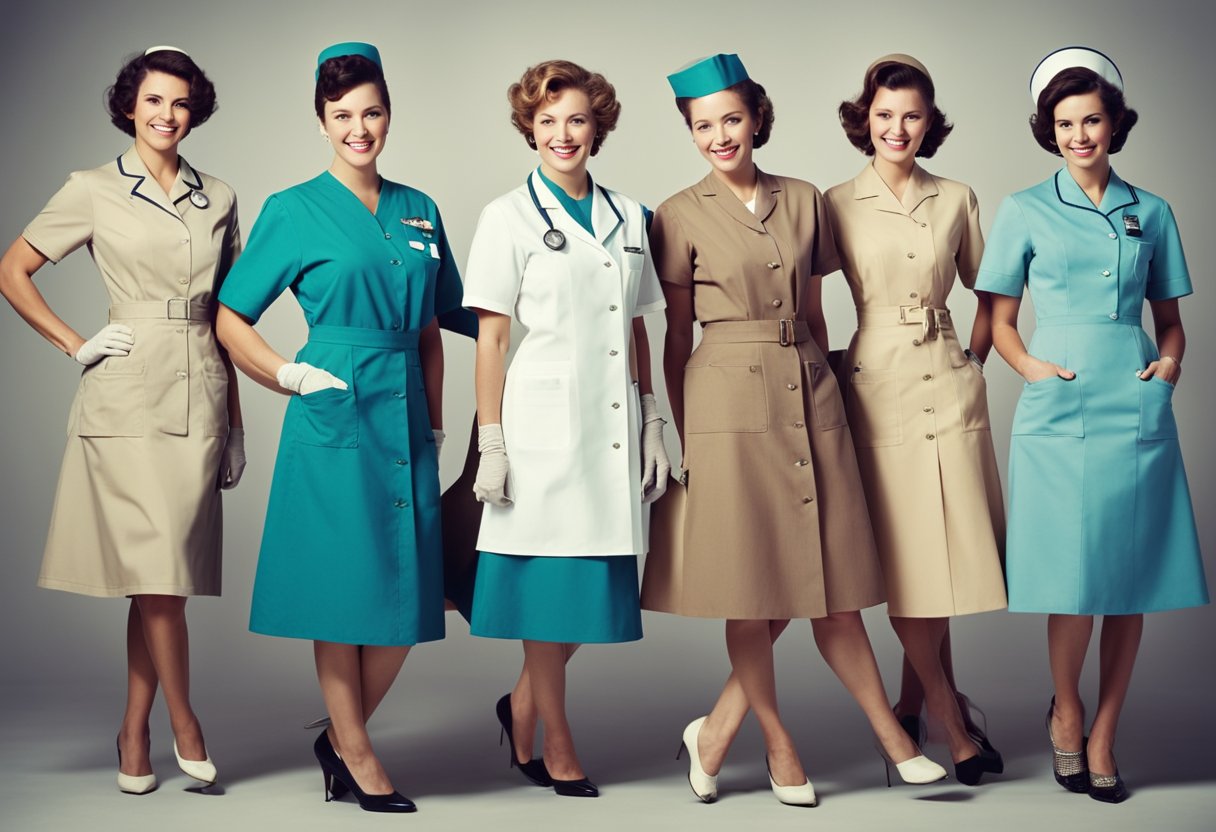Nursing uniforms have evolved over the years to reflect changes in the nursing profession and the healthcare industry. Since the 1950s, nursing uniforms have undergone significant changes in style, color, and design. These changes have been influenced by various factors, including the need for greater comfort and mobility, the increasing diversity of the nursing workforce, and the changing expectations of patients and their families.

The evolution of nursing uniforms since the 1950s has been marked by a gradual shift away from the traditional white dress and cap that was once the standard uniform for nurses. Today, nursing uniforms come in a wide range of styles, colors, and designs, reflecting the diverse needs and preferences of nurses and their patients. Some nurses prefer scrubs, while others opt for more traditional uniforms that include a dress, blouse, or skirt.
One of the most significant changes in nursing uniforms in recent years has been the introduction of specialized uniforms designed for use during pandemics. These uniforms are designed to provide greater protection against infectious diseases and other health hazards, and they are often made from materials that are more durable and resistant to wear and tear. As the nursing profession continues to evolve, it is likely that nursing uniforms will continue to change and adapt to meet the needs of nurses and their patients.
Key Takeaways
- Nursing uniforms have undergone significant changes in style, color, and design since the 1950s.
- The increasing diversity of the nursing workforce and changing expectations of patients and their families have influenced nursing uniform design.
- Specialized uniforms designed for use during pandemics have been introduced to provide greater protection against infectious diseases and other health hazards.
The Transition and Evolution of Nursing Uniforms

From Nun’s Habit to Practical Scrubs
Since the time of Florence Nightingale, nursing uniforms have undergone significant changes. Initially, nurses wore the traditional nun’s habit, which was a long, full-length dress with a white apron, cap, and veil. However, in the 1950s, nursing uniforms began to evolve into more practical and functional designs. The traditional nun’s habit was replaced by more comfortable and practical options such as pants, skirts, and scrub tops, which allowed for greater mobility and hygiene.
Influence of World Wars on Nursing Uniforms
The two World Wars had a significant impact on nursing uniforms. During World War I, nurses wore white dresses with long sleeves, caps, and masks to prevent the spread of disease. In World War II, nurses wore gowns and lab coats, which were more practical and functional for the demands of the battlefield.
Modern Nursing Uniforms and Their Functionality
Today, nursing uniforms continue to evolve, with colorful scrubs, designs, and patterns becoming increasingly popular. Scrubs are now the most common uniform option for nurses, with a wide range of colors, shapes, and fabrics available. The functionality of nursing uniforms remains a top priority, with crisp, clean, and functional designs that prioritize comfort, mobility, and hygiene.
Nursing uniforms are a symbol of dedication, pride, professionalism, and support. They represent the success of the nursing profession and the respect that it commands. As nursing continues to evolve, so too will the design and functionality of nursing uniforms.
Nursing Uniforms in the Era of Pandemics

As healthcare professionals, nurses play a critical role in preventing the spread of infectious diseases. In pandemics, such as the recent COVID-19 outbreak, nurses are at the forefront of patient care and are exposed to a high risk of contamination. Nursing uniforms have evolved over the years to address these concerns and provide better protection to both nurses and patients.
Role of PPE in Nursing Uniforms
Personal Protective Equipment (PPE) has become an essential part of nursing uniforms in the era of pandemics. PPE includes items such as masks, gowns, gloves, and face shields that are designed to protect nurses from exposure to infectious diseases. In addition to PPE, nurses also use other protective equipment such as aprons, caps, and lab coats to prevent contamination.
The use of PPE in nursing uniforms has become even more critical in recent times due to the COVID-19 pandemic. As the virus spreads through respiratory droplets, nurses need to wear appropriate masks and face shields to prevent infection. Gowns and gloves are also essential to prevent contamination from bodily fluids.
Impact of Covid-19 on Nursing Uniforms
The COVID-19 pandemic has had a significant impact on nursing uniforms. With the increased need for PPE, nurses have had to wear more protective gear than ever before. This has led to changes in the design of nursing uniforms, with more emphasis on functionality and protection.
Nurses’ uniforms have also become more diverse, with a range of uniform options available to suit different needs. Scrub tops, fatigues, and lab coats are common uniform options that provide comfort, hygiene, and functionality. Uniforms also need to provide support and protection to nurses during long shifts, which can be physically demanding.
In conclusion, nursing uniforms have evolved significantly since the 1950s, with a greater emphasis on protection, hygiene, and functionality. The recent COVID-19 pandemic has highlighted the importance of PPE in nursing uniforms and has led to changes in the design of nursing uniforms to better suit the needs of healthcare professionals. As the healthcare industry continues to evolve, nursing uniforms will continue to play a crucial role in protecting both nurses and patients.
Frequently Asked Questions

What did nurses wear in the 1950s?
In the 1950s, nursing uniforms were typically made of stiff white cotton or polyester material. They consisted of a dress with a fitted bodice and a full skirt, often with a white apron over the top. Nurses also wore white stockings and white shoes.
What did nurses wear in the 1960s?
In the 1960s, nursing uniforms became more fitted and stylish, with shorter hemlines and shorter sleeves. Many uniforms had a more colorful and patterned design, with bright colors and floral prints. Nurses also began to wear pantsuits instead of dresses.
What did nurses wear in the 1970s?
In the 1970s, nursing uniforms continued to evolve, with more emphasis on comfort and practicality. Uniforms became more relaxed, with comfortable fabrics and looser fits. Scrubs also became popular during this time, with many nurses wearing colorful and patterned scrubs instead of traditional uniforms.
When did nurses stop wearing hats?
Nurses stopped wearing hats in the late 1980s and early 1990s. Prior to this time, hats were an important part of the nursing uniform and were worn to signify a nurse’s rank and status. However, as nursing uniforms became more practical and comfortable, hats were no longer considered necessary.
When did nurses stop wearing nurse uniforms?
Nurses stopped wearing traditional nurse uniforms in the late 1990s and early 2000s. This was due to a shift towards more practical and comfortable clothing in the healthcare industry. Scrubs and other comfortable, practical clothing became the norm for nurses, with many hospitals and healthcare facilities adopting dress codes that allowed for more casual attire.
How has nursing uniforms changed over time?
Nursing uniforms have changed significantly over time, reflecting changes in fashion, technology, and healthcare practices. In the early 20th century, nursing uniforms were designed to be modest and practical, with long skirts and high collars. As nursing became more professionalized, uniforms became more fitted and stylish. Today, nursing uniforms are designed to be comfortable, practical, and easy to care for, with many nurses opting for scrubs or other casual attire.
